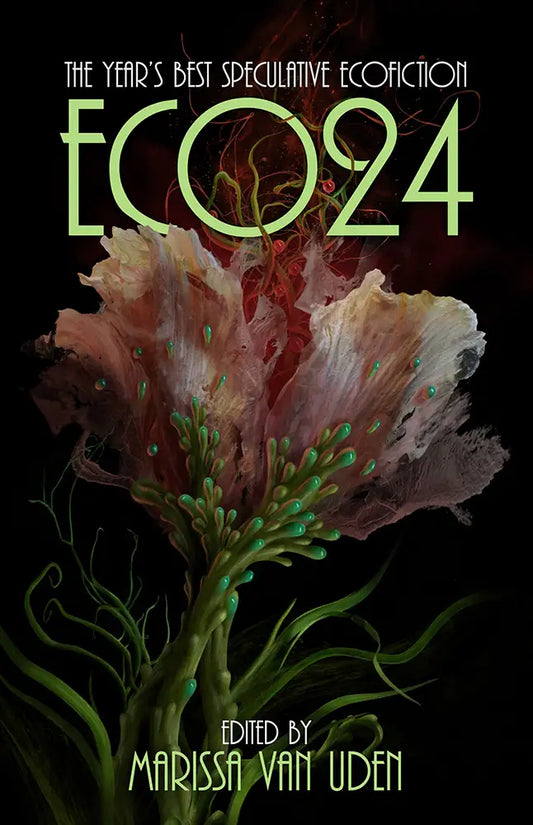
This Month’s “Words for Thought” is all about cities, houses, built environments, and the places we call home. As the weather turns colder, we all want some place safe to hunker down, but what are these places we call home? Are they really safe, and if so, for whom?
The City Born Great by N.K. Jemisin, published by Tor.com takes on the idea of a city as a living thing. Each city has a personality, and as anyone who has ever visited New York City, or spent any time there knows, its personality is rough as hell, and it doesn’t take shit from anyone, eldritch beings included. The story’s protagonist is queer, black, and homeless. He also happens to be New York City’s guardian, its midwife, and its living embodiment all rolled into one. At the start of the story, he doesn’t know any of this. There is only the sense that something in the city, his city, is wrong. New York City is still coming into being in the cosmic sense, and its birth pains aren’t helped by the fact that it is under attack from an unearthly, shambling monstrosity made up of tentacles and pseudopods. There are unexpected touches of humor in the story.
I collapse onto a square of grass, breathless, shaking, wheezing, and can only stare as a dozen limbs are crushed, two dozen eyes squashed flat, a mouth that is mostly gums riven from jaw to palate. The pieces flicker like a monitor with an AV cable short, translucent to solid and back again—but FDR don’t stop for shit except a presidential motorcade or a Knicks game, and this thing sure as hell ain’t Carmelo Anthony.
At the same time, Jemisin tackles very real and weighty issues. Who is seen and who is overlooked in cities? For whom are cities safe? The story’s narrator is considered an outsider, suspect because of the color of his skin, someone “proper” citizens need to be protected from. This makes him a reluctant hero on multiple levels, feeling ill-equipped to deal with unspeakable horrors, and wondering if the city even deserves his protection. “The City Born Great” captures the personality of New York City wonderfully, its rough edges, and its unbreakable spirit. The places we live are imbued with the personality of their citizens, and full of quirks all their own. As someone who lived in Jersey and worked in NYC for several years, I fully admit this story had me wanting to punch the air and yell, “Hell, yeah! No cosmic horror is taking my city down!”
In the City of Kites and Crows by Megan Arkenberg from the Autumn issue of Kaleidotropeis a story that gets at the gritty and abused character of cities, the worn-down parts visitors often don’t see, but which those who live there know well. Hythloday has many lovers, and all of them are revolutionaries, trying to take the government down. The city in this case is one shadowed by police brutality, and haunted by the ghosts it leaves behind. Like Jemisin, Arkenberg asks readers to consider - who does the city offer protection to, who is allowed to claim citizenship and call it home? The imagery in the story is striking and effective, contrasting former decadence and faded glory with the reality of the city today. Citizens in Arkenberg’s story can load an app onto their phone that shows them suppressed and erased information about various locations in the city, where people were brutalized by the government, and killed. It’s a digital form of haunting that is eerie and effective. Again, like Jemisin’s story, Arkenberg’s touches on who is seen and who is unseen, where people choose to focus their attention, and how much they allow themselves to know about what’s going on right under their noses. Those who fight back are contrasted with those who don’t, and the cost of each choice leaves scars. Arkenberg presents Hythloday almost as a revolutionary groupie,the equivalent of a starfucker. It’s a lonely existence. Ultimately, the story asks - what good are cities if all the people you loved are gone from them?
The House That Creaks by Elaine Cuyegkeng from the October issue of The Dark also deals with government brutality. The protagonist is a reluctant haunted house, used by the new regime to torture members of the old regime, stained and corrupted by the violence done within its walls. But underneath the monstrosity the house has been forced to become, it tries to make itself a safe haven for a murdered girl who once lived in its walls and loved it.
I remember her. She screamed and screamed. But I--my walls are made for silence. They have been modified, the window glass enchanted to contain sound. There is a forest of hands scattered across my glass, faded by dust and time. There is an imprint of a face.
The story is harrowing and lovely all at once, haunting in the truest sense. Elements of it are reminiscent of “Pol Pot’s Beautiful Daughter” by Geoff Ryman, first published in Fantasy & Science Fiction, and “Tin Cans” by Ekaterina Sedia, first published in Haunted Legends and reprinted at Weird Fiction Review, among other places. Like the idea of cities taking on the characteristics of their citizens, “The House That Creaks” plays with the idea of a house taking on the cruel qualities of its occupants, but also the kind ones, too. The house remembers Esme, it wants to protect her, even though it has become a terrible thing. The story is cyclical, as children pay for the sins of their parents, as innocence is corrupted, and people and places both become monstrous in order to fight the monsters. Home as a place of safety is a matter of perspective here. The typical trappings of a haunting become a lullaby to soothe a ghost girl to sleep. Horror is wrapped in beauty, the effects of both lingering long after the story ends.
Everyone From Themis Sends Letters Home by Genevieve Valentine in October’s Clarkesworld offers a different take on the idea of home and what that means to different people. A group of convicts is recruited to test a virtual reality game without their knowledge. They believe they are the first colonists on an alien world, and the story unfolds through a series of letters sent home. However, as the story progresses, interludes in the real world eclipse the game environment, blurring the line between the two and bringing into question what reality means. If the game feels real to the players, if they don’t know the difference between the two, who is to say it isn’t reality for them? The parallels Valentine draws between game environment and in-game behavior vs reality further throw the distinction into question. The story has heartbreaking moments as the convicts realize they’ve been tricked and betrayed. One of the convicts, Marie, wants nothing more than to return to the game even once she knows the truth. It felt like home to her, and she had a purpose there.
It’s not real, they forced it on us and we were never meant to keep it, I’m not stupid, but I held the fruit fly in the cup of my hand and felt its wings beating. How can they say that’s not mine?
Bits of the story that feel like sly winks to our own reality, for instance, what if No Man’s Sky really hadchanged gaming forever and opened whole new possibilities in virtual reality, and the idea of “ethics in games journalism.” However, the bigger themes of the story are about truth and the nature of reality. Is it a lie if it feels real, if people don’t know they’re being lied to, if they can’t remember the lies they’re told? Like Jemisin, Arkenberg, and Cuyegkeng’s stories, ”Everybody from Themis Sends Letters Home” also touches on the idea of who has rights, who gets silenced, and who gets used as a tool by the system for “the greater good.”
Rooms Formed of Neurons and Sex by Ferrett Steinmetz from Uncanny Magazine offers a different take on “virtual reality” and the built environment. Lydia is a phone sex operator who unwittingly starts a relationship with a brain in a jar. Their initial relationship and sex life takes place in mutually created environments that they describe to each other in meticulous detail over hours on the phone. Some environments are romantic, like the Eiffel Tower, but others are more mundane, like hospital rooms and convenience stores. Building these details in imagined environments leads Lydia to new appreciation for the world around her; the real becomes more real through the power of imagination. When Lydia finally meets Ross and learns what he is, she’s initially disturbed. However, after her trepidation passes their relationship escalates, and a whole world of sensation opens up. Lydia feels and experiences the world for both of them, gaining an erotic charge from everyday things like the fold of paper, the smooth metal of a hand railing. She sees the city, her home, everything around her in a whole new light until she realizes she’s not the only one Ross is dating. He has nothing but described input to live on and needs constant stimulation from conversation or else his mind will decay. She cannot be enough for him. Steinmetz manages a delicate balance between humor, erotica, and genuine emotion. They story highlights the power of words and how much of sexuality and attraction dwells in the mind. The story also looks at failure of communication, the way relationships can fall apart, and the beauty of the tiny details in the world around us. Like Valentine’s story, it questions what is real, and what the value of reality is for those who draw more satisfaction out of the imagined, the false, and the created. Home, in this story, is quite literally what you make it.











